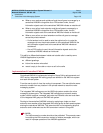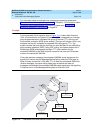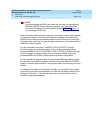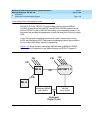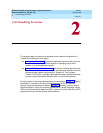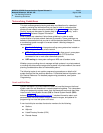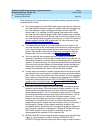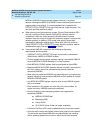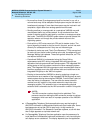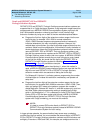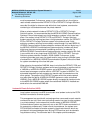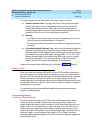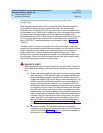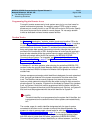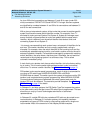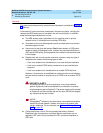
MERLIN LEGEND Communications System Release 6.1
Network Reference
555-661-150
Issue 1
August 1998
Call-Handling Scenarios
Page 2-5Networking Guidelines
2
— No more than three (3) analog spans should be involved in any call or
volume levels may not be adequate. Multiple spans may be the result of
transfers and coverage. If more than three spans may be involved in call
completion, digital rather than analog spans should be used.
— Sending overflow or coverage calls to a centralized VMS/AA may add
unanticipated traffic to a private network. A call transferred from one
system to another and then sent back by overflow or coverage occupies
two trunks. The MERLIN LEGEND system does not provide release link
operation when a call through the private network returns to the
originating system.
— Pools within a UDP route cannot mix PRI and tie tandem trunks. The
type of signaling is based on the first trunk in the pool, and will not work
correctly for subsequent trunks if they are not the same type.
— If tandem tie trunks are used, Touch Tone Receivers (TTRs) are required
for each call over the tie trunks including voice calls, coverage calls, and
Message Waiting light updates. These calls go both directions, so TTRs
are required at both ends.
— Centralized VMS/AA is implemented using the Group Calling
enhancement and UDP routing. Integrated VMI calling groups are
defined on the hub system and each remote system. The integrated VMI
calling group on the hub system contains the voice messaging system
ports. The integrated VMI calling groups on each remote system receive
overflow, coverage, and voice mail retrieval calls and route them to the
integrated VMI group on the VMS hub system.
— Routing to the centralized VMS/AA is done by assigning a single non-
local extension as a member of the integrated VMI calling group at each
remote system sharing the centralized VMS/AA. From the user’s point of
view, the routing is transparent. The user dials the same extension
number from any location in the private network to reach the voice
messaging system. This extension has no corresponding physical
extension and is referred to as the
VMI conversion number
in this guide.
NOTE:
The VMI conversion number should not be published. This
prevents users from dialing the VMI conversion number to retrieve
messages, which can result in improper operation of the VMS/AA
application.
■ A PassageWay Telephony Services application may use the length of
ANI/ICLID information to differentiate outside calls from inside calls. Some
businesses can set up their PBX to send only a 4-digit number for
ANI/ICLID information. For Release 6.0 and later systems, a call with less
than 5 digits appears as a private network call.
■ If a PassageWay Telephony Services application uses the presence of a
trunk identifier to differentiate inside and outside calls, a non-local dial plan
call displays as an outside call. The display depends upon the application.



